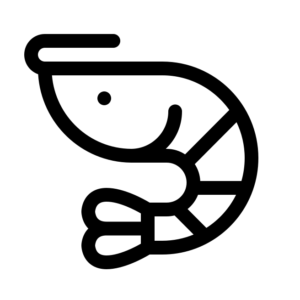This is often overlooked when it comes to shrimp breeding because if a hobbyist keep them in a large colony and “Hope” for the best results will often be disappointed. The history of Caridina you see today with multiple colors and pattern are what we call selective breeding. *Disclaimer* i’m not a know all but a very passionate hobbyist trying to share as much accurate information as possible.
Today, i’ll touch on just 1 topic about genetic breeding known as backcrossing (Line breeding) and outcrossing . The whole idea of backcrossing is to strengthen the genetics of either side of the parent shrimp. For example, if you start off with a male and female and you would like to retain and enhance the male traits than backcrossing a F1 female to F0 Male is required. For outcrossing, it inject new genetic traits into the current pool to enhance new trait and also helps prevent deformation.
Backcrossing: I did a simplified chart with a Male and Female each carrying 100% of it’s own genetic pool and the F1 in ideal state will carry both 50% of the parents gene. (Please note that this will work optimally if the pair is of certain quality. matching a good male and a transparent female will have a higher cull % at BC1 resulting in a longer process)

Now taking the desired trait F1 Female and putting it back into the F0 Male tank to further build on the Male traits.

Now the BC1 shrimplet will carry 75% of the male genetics which is much nearer to the male F0 shrimp.

When we are in this stage, the F0 Male x BC1 Female will result in a higher % of trait similarity genetically to the F0 male.
| F1 | 50 | 50 |
| BC1 | 75 | 25 |
| BC2 | 87.5 | 12.5 |
| BC3 | 93.75 | 6.25 |
| BC4 | 96.875 | 3.125 |
The journey to create that ideal trait has it’s down side as well and after speaking to renown Taiwan breeder confirms my learning on the side effects of too much inbreeding.
Here are some of the effects where it’s classified as degeneration/deform:
- When the female do not hold the eggs or keep kicking the eggs
- Young shrimplet born out and keep dying given the correct parameters
- shrimplets that never reach maturity and always remain small
- big head and head to body ratio does not fit 1:3 deform growth in large numbers
- Open skirt or some call it skirting where the carapace is too short.
- decreased lifespan
- Hunchback
To prevent deform shrimps and also to keep a good line of shrimp require diligence in ensuring the shrimp do not over in breed. When you do see any of the above effects, the shrimp had already reached a very late stage of inbreeding. You can use that as a gauge if not you can consider injecting new blood/genetics whenever you can and the method of doing so is call outcrossing.
Outcrossing: The idea for outcrossing on the other hand is to inject new genome to the current shrimp which has been line bred for some time. The reason this need to be done is because when line breeding get too excessive, deform start showing, shrimps stop breeding, growth stagnant, etc hence it is important for the health of the line to occasionally introduce new blood. There is no hard and fast rule when to introduce the new genetic into the pool because different people get the shrimp at different generation. If the shrimp i have gotten is already line bred for 5-6 generations it will reach the deform point faster if the shrimp has been already outcross before. A reputable breeder will be able to provide high quality new generation of shrimps when they have a large number of tanks to prevent too frequent inbreeding.
I hope this post provided you some insights into breeding high quality shrimp.

Hi Ben, very interesting article, clearly and tangibly written. Thanks 🙂
Thank you very much for this topic. I hope on the next breeding